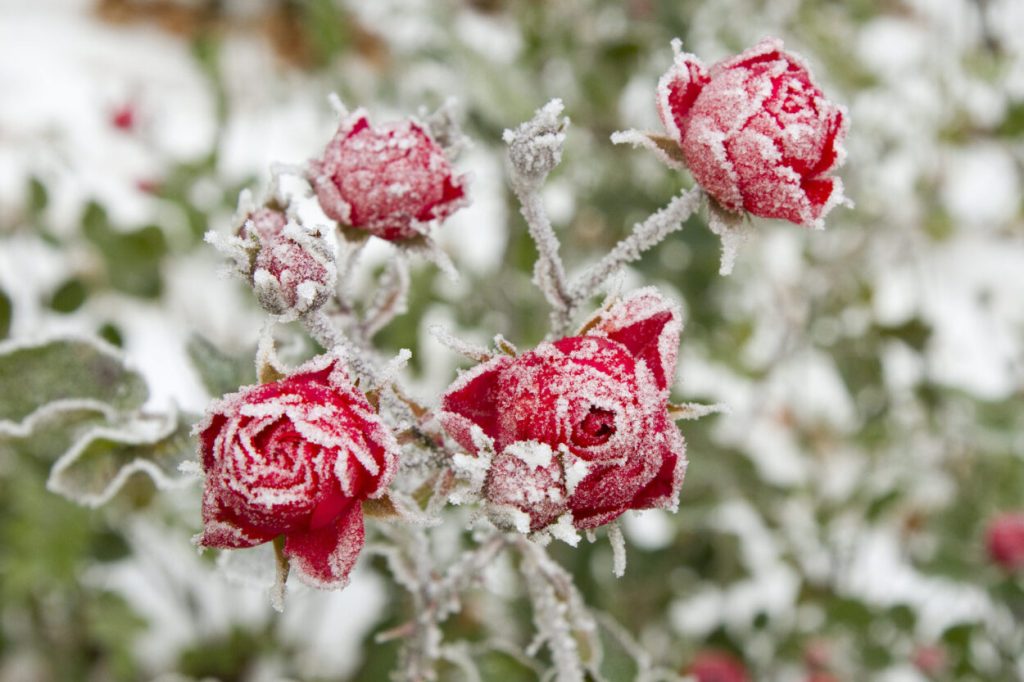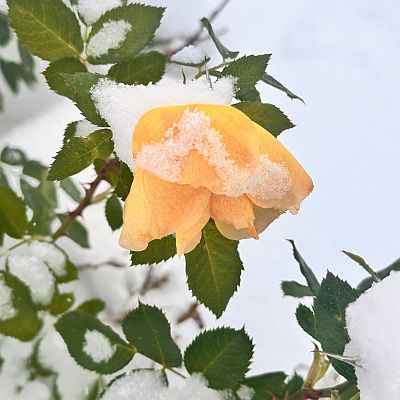While tea roses and certain delicate varieties often struggle to survive in cold climates, many newer hybrids and some classic shrub rose cultivars can withstand freezing temperatures with the right protection. Although these methods can’t guarantee survival, they significantly improve the chances for roses that are only marginally hardy.

Understanding Winter Damage to Roses
Roses can be harmed or even killed during winter in several ways:
- Extreme Cold: Low temperatures can damage roots and branches.
- Temperature Fluctuations: Rapid freezing and thawing can cause soil heaving, which exposes and dries out roots.
- Rodent Damage: Mice sheltering under snow or straw can chew on stems.
- Physical Damage: Heavy snow or ice can break branches.
The best defense against cold damage is to choose hardy cultivars. Generally, roses with smaller blooms tend to be more resilient than those with larger flowers. Hybrid tea roses, for example, are usually less hardy than grandifloras or floribundas. However, some climbing roses and older shrub cultivars are known for their cold tolerance. Series like the Explorer roses, bred specifically for Canadian climates, are excellent options for harsh winter conditions.
Preparing Roses for Winter
A rose’s ability to survive winter depends partly on its microclimate—the immediate area where it’s planted. Factors like proximity to a warm, south-facing wall or exposure to cold winds on a north-facing slope can influence the plant’s hardiness. Even in cold climates or challenging microclimates, proper winter protection techniques can help roses thrive.
For shrub roses, start by mounding soil or compost about 10 to 12 inches high around the base of the plant. Then, cover the mound with 12 to 16 inches of mulch made from materials like leaf mold, straw, or pine needles. This additional insulation helps regulate soil temperatures, minimizing the risks of freezing, thawing, and soil heaving. However, if mice are common in your area, avoid organic mulches that can attract them and provide easy access to your rose stems. The best time to apply mounding is in mid to late November, as doing it too early can interfere with the natural hardening process of the stems.
If rabbits are present in your landscape, it’s wise to surround your rose bush with a wire cage, particularly if the canes are exposed above the usual snow depth. While standard chicken wire may work, determined rabbits can chew through it. For better protection, use heavy-duty rabbit fencing or hardware cloth. It’s a good idea to set up this barrier first, then fill it with soil or compost to protect the rose.
When covering the plants, you might need to prune the canes down to the level of the mulch for convenience, but avoid cutting too much. Leave the final pruning until spring, when you can assess which parts of the canes survived the winter and trim back only the dead portions. A mild winter or heavy mulching may reduce the need for pruning altogether.

Protecting Climbing Roses
Climbing roses require a slightly different approach. For best results, detach the canes from their support structure and gently lay them on the ground. Natural snow cover offers excellent protection against bitterly cold temperatures. If reliable snow cover is lacking, add a mound of snow or mulch over the canes.
As spring approaches and plants begin to grow, carefully remove the mulch. Removing it too early can cause the rose stems to dry out, so monitor the temperature and conditions closely.
Wrapping stems and trellises with materials like straw, paper, or burlap can provide some insulation during particularly cold nights, but this method offers only minimal protection. Shielding canes with soil and mulch at ground level is a much more reliable way to keep your roses safe during the winter.
With proper preparation and protection, your roses will have a much better chance of making it through the winter and flourishing once the warm weather returns.


Leave a Reply